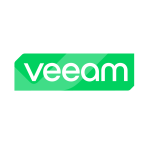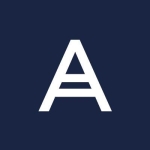What is our primary use case?
We currently utilize Zerto as our disaster recovery solution. With Zerto, we replicate production virtual machines to our DR site. This approach enables us to recover and bring everything back online in a disaster swiftly. Our recovery point objective can be as low as five seconds, depending on the replication point.
Additionally, we employ Zerto for scaling purposes and for conducting upgrade testing. This entails spinning up VMs in an isolated environment, allowing us to perform various tests. For example, a few years ago, we tested the upgrade of our active directory domain controllers. By validating processes within this environment, we can ensure their smooth execution in production. These are the two primary use cases for Zerto in our organization.
How has it helped my organization?
Zerto is very user-friendly. We can select the VMs by installing a small agent specifically designed for the host. This agent identifies all the VMs. Zerto integrates smoothly with VMware, which is our primary core platform. I believe it also functions well with other hypervisors, although I am only familiar with VMware. Therefore, the integration with vSphere simplifies the process of creating groups, runbooks, and other components necessary for building our disaster recovery environment.
Zerto's near-synchronous replication performs admirably. Many times when I check, we are only about five seconds behind in terms of production time. Of course, this does depend on network performance. There have been instances where the delay exceeded five seconds due to network blips or other issues. However, for the most part, we consistently remain within a five-second range of our production environment.
As a manufacturer, a significant portion of our operations relies on timely execution in order to ensure efficient production and timely delivery of our products. We closely coordinate with external partners and customers to minimize downtime and maintain a seamless real-time production process, which is crucial for us.
The ability to conduct faster disaster recovery testing and the potential for quicker recovery in the event of a disaster have been greatly improved. Before using Zerto, our approach involved log shipping and manual recovery, which meant that the best we could do was recover the previous backup from the previous night, assuming the backup was successful. This process would take hours or even days. However, with Zerto's automation, we can now recover within seconds—five, ten, or twenty seconds from the point of the outage. We can bring systems back online automatically and at a significantly faster pace than our previous manual approach allowed.
Zerto has significantly improved our recovery time objectives compared to what they used to be. Previously, we would have to restore from backups from the previous night and manually configure systems. Therefore, the recovery time objective has likely decreased from days to approximately an hour, or perhaps even less. It's challenging to determine the precise timeframe in a real disaster scenario since we conduct disaster recovery testing. However, it is undoubtedly much better than it was before, although pinpointing the exact time of an actual disaster is somewhat different.
Zerto has helped us reduce our organization's disaster recovery testing from several days of preparation to just a single day.
What is most valuable?
Zerto is easy to configure and manage. The ability to quickly bring up VMs within a test environment allows us to test our disaster recovery functions and ensures that they would function just as well in an actual disaster scenario. This enables us to swiftly recover in the event of a disaster.
What needs improvement?
Zerto could be easier to configure when we need to perform data testing and establish network connectivity outside of the isolated environment. We encounter situations where there is a desire to test a printer during disaster recovery testing. However, due to the presence of an isolated environment, doing so can result in complex configurations.
Zerto needs to improve its support for VMware Lifecycle Manager. This creates a problem with VMware's ability to automate the complete VMware stack upgrade.
For how long have I used the solution?
I have been using Zerto for ten years.
What do I think about the stability of the solution?
Zerto is highly stable. It is rare to encounter any issues with it. Typically, any problems that arise are due to changes made on our end that may have inadvertently affected it. However, Zerto remains an exceptionally stable product.
What do I think about the scalability of the solution?
To the best of my knowledge, Zerto can scale to the extent that we require. I am not aware of any limitations, as we have not encountered any thus far.
How are customer service and support?
The technical support is generally very prompt in responding, and highly knowledgeable, and they will continue working with us until the problem is resolved.
How would you rate customer service and support?
Which solution did I use previously and why did I switch?
We previously used Dell RecoverPoint for Virtual Machines and completely replaced it with Zerto.
Zerto is much easier to use compared to RecoverPoint. Previously, with RecoverPoint, we could only program-specific logs, and the VMs we wanted to replicate had to remain on those logs. If we moved the data off those logs, replication would be lost. However, Zerto keeps track of the VM regardless of its location, making it superior to RecoverPoint in terms of configuration and management.
Zerto is a more cost-effective product than Dell RecoverPoint.
How was the initial setup?
The initial setup is straightforward. We need a virtual machine, install it, push it through, and configure it to communicate with the host for deployment. I mean, it's a very straightforward process. Two people were involved in the deployment.
What about the implementation team?
The implementation was completed in-house.
What was our ROI?
The human resources necessary to perform a disaster recovery test are undoubtedly available. It is more economical than RecoverPoint. Now, it has been many years, and I am uncertain about the cost disparity. However, on the whole, there is a decrease in various aspects regarding the product's cost and the number of work hours needed for disaster recovery testing which is a clear return on investment.
What's my experience with pricing, setup cost, and licensing?
The pricing is straightforward. We are on an enterprise licensing model, and it is based on a per-VM basis. We have the option to purchase them in blocks. This approach is quite cost-effective as we do not replicate our development and testing environments. We only replicate the production environment. Therefore, we are not paying for the entire setup, but only for what we are actually replicating.
What other advice do I have?
I rate Zerto a ten out of ten.
Currently, we have a separate product that we use for backup, which has immutability features. However, we do not currently employ Zerto for immutability purposes.
We have considered using the cloud for disaster recovery, but currently, we maintain the same hardware at both locations. However, since we conduct all of our firmware testing and upgrades on our disaster recovery site first, we have decided to keep our own disaster recovery site instead of attempting to do it in the cloud.
We could easily transfer data to the disaster recovery system. One of Zerto's functions is to replicate data from virtual machines or migrate entire virtual machines, although we haven't utilized it for that purpose.
The only maintenance required is typically software updates. Whenever a new version is released, we must go through the process of upgrading Zerto. Other than that, unless there are any issues, it generally operates smoothly.
We just need to ensure that we know the number of virtual machines we would be replicating so that we can obtain the correct licensing. Otherwise, we will have to backtrack. If we underestimate, we will need to provide additional licensing. It is important to determine this information upfront, as well as the bandwidth between our site and the replication location, as it also affects our recovery objectives.
Which deployment model are you using for this solution?
On-premises
Disclosure: PeerSpot contacted the reviewer to collect the review and to validate authenticity. The reviewer was referred by the vendor, but the review is not subject to editing or approval by the vendor.

















